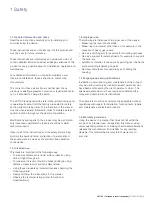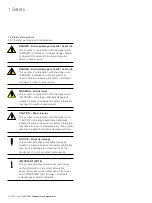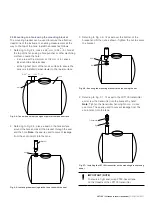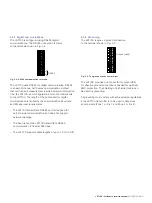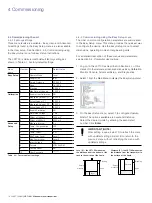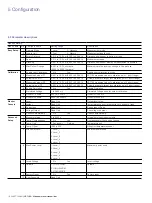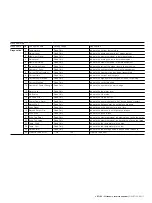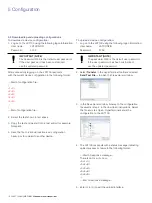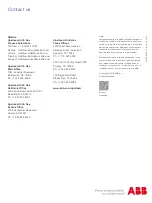
10 OI/LST100-EN
| LST100 – Ultrasonic level transmitter
3.2 Signal cable connection
The LST100 is designed to operate from battery and solar
power sources.
Installation notes:
– Use 7-core shielded cable for power supply and signal
connections.
– Use twisted cable with a specific cross section and
length. For longer lines, cable with a greater cross
section is required.
– Use the cable shielding to make ground connections.
The signal cable is connected to the terminals shown in Fig. 3.1.
3 Electrical connection
NOTICE – Property damage
Do not connect the shielding to different grounds
at each end of the cable.
+
–
+
–
+
–
12 V DC
Ground (earth)
DAC
RS 485
Test
Fig. 3.1: LST 100 electrical terminals
3.2.1 DC power supply
The LST100 operates from a 12 V DC power supply that
is connected to the terminals shown in Fig. 3.
+
–
12 V DC
Fig. 3.2: 12 V DC power supply terminals
The power supply voltage is: 9 to 16 V DC.
– The minimum power capability of the battery and solar
power supply is: 120 mW.
3.2.2 Analog output
LST100 has a 1 to 5 V analog output that is connected using
the terminals shown in Fig. 3.3.
+
–
DAC
Fig. 3.3: Analog output terminals
The LST100 uses a 1 to 5 V analog output to display
measurement results and alarm data.
IMPORTANT (NOTE)
Use twisted wire to improve resistance to
interference.
The output voltage is the process variable during normal
conditions. It can also be a fixed value as a failsafe or to
indicate alarm conditions.
– The voltage output range of a valid signal is 0.97 to
5.2 V DC.
– A high alarm is defined as >5.4 V and a low alarm is
defined as <0.95 V.
– The refresh frequency of the 1 to 5 V output is 1 second.



